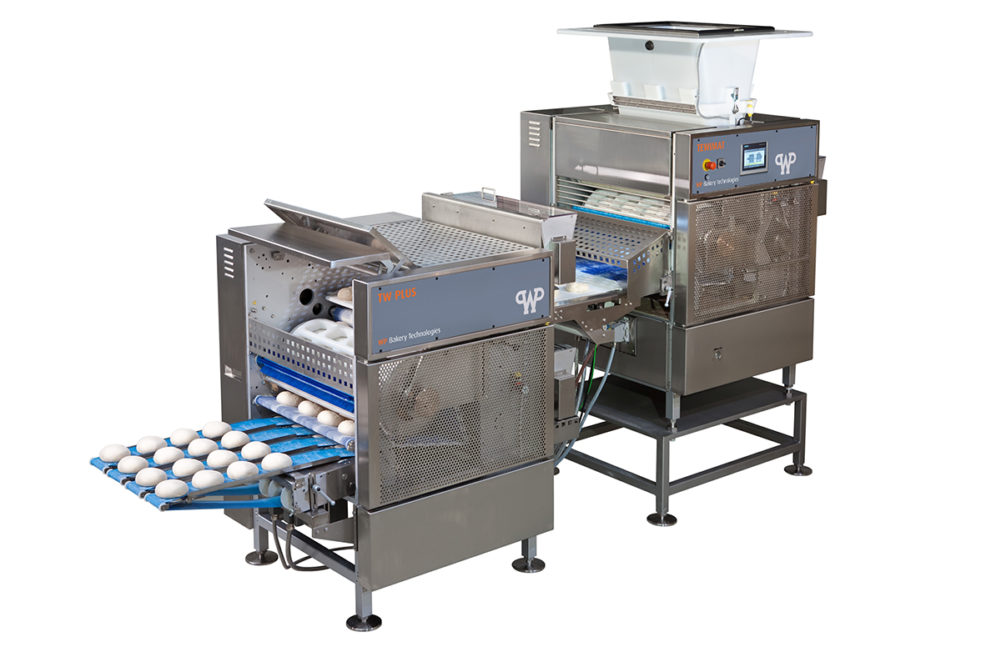It doesn’t matter where people travel or what nation they visit. When it comes to the most universally accepted bread, flat is still where it’s at, but that’s where the similarity ends. Flatbreads from classic naan, chapati and roti to popular pita and tortilla-style wraps are as diverse as the cultures that created them. They’re round, square, rectangular or oval, ranging from smooth, fluffy and pliable to as crisp as a cracker.
Even pizza crusts come as thick as the ultra-popular Detroit or its Sicilian counterpart to thin like a New York classic or the traditional Neapolitan from a wood-fired oven, and that’s just the beginning.
“Other trends include expanding applications of better-for-you, grain-free and gluten-free varieties as well as vegetable- and nut-based flatbread and pizza crusts, including cauliflower, broccoli, chickpea, turnip, red peppers, almonds and cashews,” observed Jeff Zeak, national development manager, bakery, at Reiser.
Moreover, Mr. Zeak mentioned the increasing demand for flavor-infused flatbreads influenced by Asian, African, Mediterranean, Indian, Mexican, South American and Jamaican cuisines. In addition to requiring many forms of baking equipment, these products may need further processing of vegetables, nuts, herbs, spices and other inclusions into meal, paste or puree that can be added to the dough.
That’s why there’s no one way to manufacture all of these types of baked goods, let alone automate them.
“With pizza and flatbreads, there is so much variability in the product and the process that you’ll never be able to make them all on one line — never,” said David Moline, vice president of sales and marketing, Moline Machinery. “Your process is dictated by your product, but the good news is that you can add some flexibility to the processing line”
Such cultural heritage combined with contemporary culinary creativity has made the pizza and flatbread categories a haven for new product activity in recent years.
“One of the exciting things about pizza in North America is the variety of options for the consumer,” noted Nick Magistrelli, vice president of sales for Rademaker USA. “This diversity presents challenges for equipment manufacturers and bakeries to create the right solutions to produce these pizzas at the desired output.”
Hans Besems, executive product manager, AMF Tromp, an AMF Bakery Systems brand, noted that pizzas and flatbread production have a lot in common. However, they often require a flexible makeup line to accommodate various formulas and to achieve the final products’ characteristics.
“Compared to pizza production, flatbreads and tortillas have similar production technologies, like pressing a piece of dough to a specific shape or first creating a sheet of dough and cutting out the shape and size desired,” Mr. Besems said. “Pita, naan, pizza or many flatbreads are also produced this way and can even be proofed and baked in the same line.”
Automating pizza production starts by selecting from a menu of different processing possibilities. Mr. Zeak noted some doughs ferment in bulk for several hours or even a day before further processing, while others are immediately rounded after mixing into dough balls before resting. Yet another method involves sheeting or laminating the dough before stamping or die-cutting it into its desired shape.
After proofing from a few minutes to several hours, the raw or par-baked dough is garnished with sauce, cheese and desired toppings before freezing and wrapping.
“One key area in defining the equipment solution is understanding the details of the product in terms of the formula and process,” Mr. Magistrelli said. “At that point, the decision will be made if the front end of the line is an extruder or a low-stress component. You build the system from there; the cell structure, final dough thickness and product shapes determine what system is needed to meet the baker’s needs.”
Randy Kelly, sales application specialist, Fritsch USA, a Multivac company, said its Sheet & Cut process uses a roller cutter to create dough pieces and is designed for flatbreads and pizza without a distinct rim. In the Sheet & Cut & Press process for pizza bases, the dough pieces are punched out and, at the same time, gently pressed to create the rim.
“With this method, the dough maintains its characteristic structure thus giving it a handmade look,” Mr. Kelly said.
Mr. Moline said rising crust pizzas also employ a pressing process on a sheeting line, but the process maintains a no-stress rim.
“We degas the center of the dough, but not the perimeter of the dough, which leads to a rising crust pizza where the outside pops up,” he said.
On the other hand, Gemini Bakery Equipment/KB Systems specializes in dough ball production lines for pizza crusts. The company’s lines come in two categories that are designed to run dough balls from either 4 to 18 oz or 8 to 36 oz.
“To manufacture a wide range of weight and dough types, we have found it is necessary to have distinctly different rest/proof times for the dough ball before final processing,” said Jerry Murphy, vice president, sales, Gemini Bakery Equipment/KB Systems.
Internationally, an emerging trend involves gourmet pizza and Roman-style “pinsa,” noted Franco Fusari, commercial director and co-owner of Minipan.
“High-hydration recipes, combined with a long fermentation, are delivering an outstanding clean label crust, while enhancing the organoleptic characteristics of the product,” he said.
Mr. Fusari added that the r_EVOLUTION line for highly hydrated formulas starts with a seamless sheet of dough that’s cut and loaded directly into the oven without extruding or proofing. Minipan recently developed a cold press for creating artisan-style pizzas with a raised rim.
This article is an excerpt from the October 2021 issue of Baking & Snack. To read the entire feature on Pizza & Flatbread, click here.





